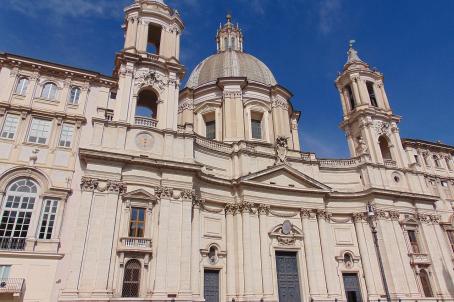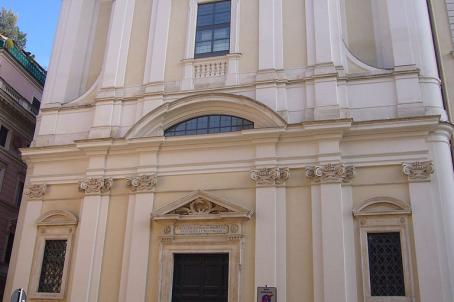Chiesa di Santa Maria della Pace

The church of Santa Maria della Pace was consecrated in 1482 by Pope Sixtus IV on the site of an earlier chapel. In 1656-1667, Pope Alexander VII had the building restored by Pietro da Cortona, who added the famous baroque façade that juts out between the concave wings: this façade, which was intended to simulate a theatre stage, has two orders and is preceded by a semicircular pronaos supported by twin Tuscan columns.





